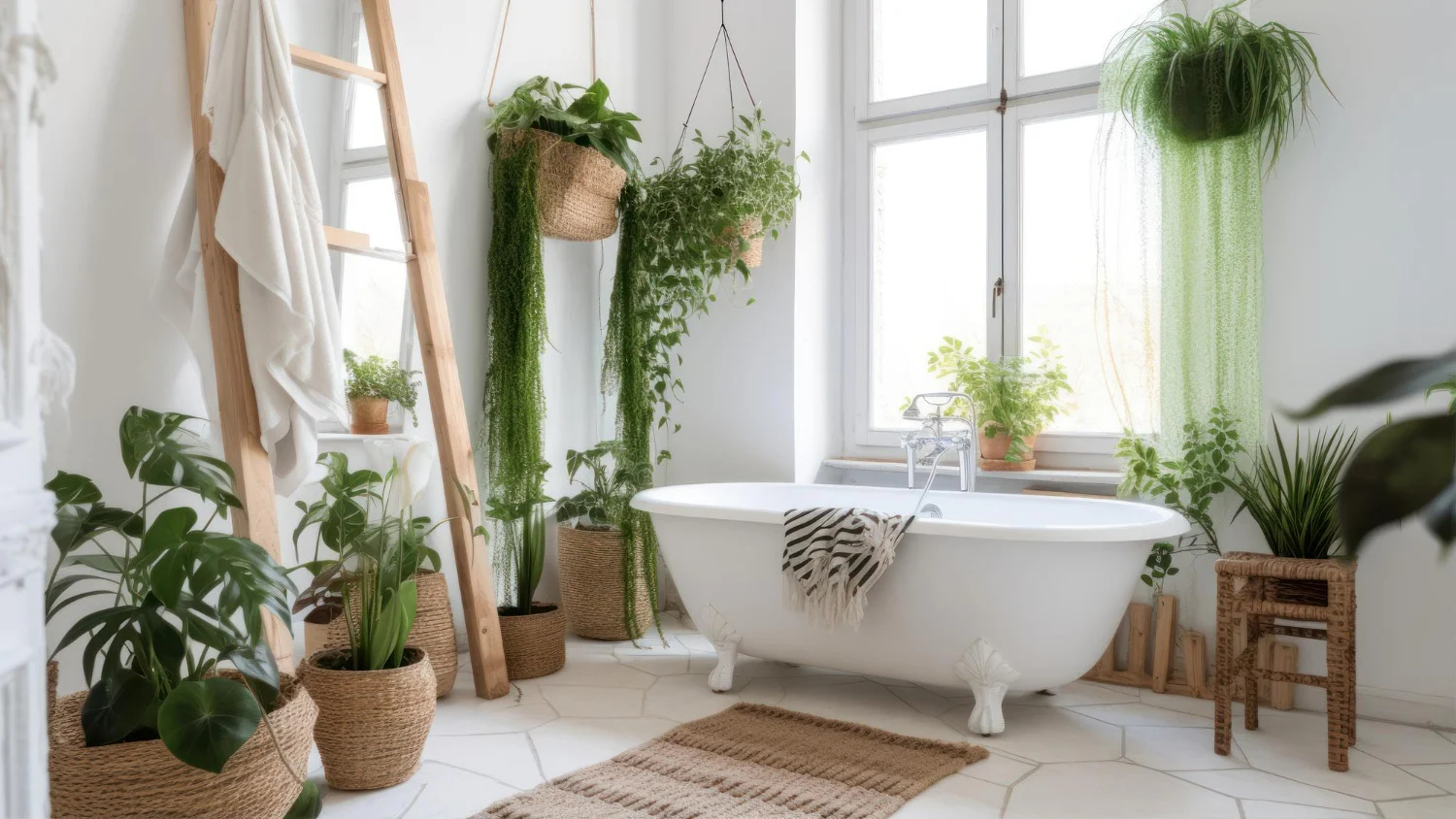Introducing plants into your bathroom can significantly enhance its ambiance, transforming it into a more inviting and serene space. Beyond their aesthetic appeal, certain houseplants thrive in the unique environment of bathrooms, characterized by higher humidity and varying light conditions. Selecting the right plants can also contribute to improved air quality and moisture control. Below, we explore several plant options well-suited for bathroom settings:

Peace lilies are renowned for their ability to absorb moisture from the air, making them natural dehumidifiers. They thrive in high-humidity environments and prefer indirect sunlight. Their elegant white blooms add a touch of sophistication to any space. However, it's important to note that peace lilies can be toxic to pets if ingested, so they should be placed out of reach of animals.
Spider plants are hardy and adaptable, making them ideal for bathroom conditions. They excel at absorbing excess moisture and can tolerate a range of light conditions, from low to indirect sunlight. Additionally, spider plants are known for their air-purifying qualities, helping to remove toxins such as carbon monoxide and formaldehyde from the environment. They are also non-toxic to pets, adding to their appeal for households with animals.
Boston ferns flourish in humid environments, making them a natural fit for bathrooms. They prefer indirect light and consistent moisture. Their lush, feathery fronds can add a vibrant, tropical feel to your space. Regular misting and ensuring the soil remains moist will keep them healthy. Be mindful that Boston ferns can be more demanding in terms of care compared to some other houseplants.
Also known as Mother-in-Law's Tongue, snake plants are celebrated for their low maintenance and resilience. They can tolerate low light conditions and are effective at absorbing excess moisture and improving air quality. Their upright, sword-like leaves add a modern aesthetic to any room. However, they are toxic to pets if ingested, so placement should be considered accordingly.
Aloe vera plants are succulents that thrive in humid environments with ample sunlight. They require minimal watering, as the humidity in a bathroom often provides sufficient moisture. Beyond their decorative appeal, aloe vera leaves contain a gel with soothing properties for minor burns and skin irritations. Ensure they receive bright, indirect light to maintain their health.
Orchids can thrive in the warm, humid conditions typical of bathrooms. They prefer indirect light and can add a touch of elegance with their delicate blooms. While they enjoy humidity, it's important to allow their roots to dry out between waterings to prevent root rot. Placing them near a window where they can receive filtered light is ideal.
Bamboo palms are excellent at absorbing moisture and can help in reducing humidity levels in the bathroom. They prefer indirect light and can grow quite tall, making them suitable for larger bathrooms. Their feathery, arching fronds contribute to a lush, tropical atmosphere. Regular watering and ensuring proper drainage will keep them thriving.
English ivy is known for its ability to reduce airborne mold and absorb excess moisture, making it beneficial for bathroom environments. It thrives in moderate light and cooler temperatures. Its trailing vines can be an attractive addition when placed on shelves or in hanging baskets. However, English ivy is toxic to pets, so it should be kept out of their reach.
Bird's nest ferns are well-suited to the humid conditions of a bathroom. They prefer indirect light and consistent moisture. Their broad, wavy fronds can add a unique texture to your bathroom decor. Regular misting and keeping the soil evenly moist will promote healthy growth.
Pothos is a versatile and low-maintenance plant that thrives in various light conditions, including low light. It enjoys the humidity found in bathrooms and can be displayed in hanging baskets or allowed to trail from shelves. Pothos is also known for its air-purifying properties. However, it is toxic to pets if ingested, so caution is advised in pet-friendly households.
In bathrooms lacking natural light, it's essential to choose plants that can tolerate low-light conditions. Options such as snake plants, pothos, and certain ferns can adapt to these environments. Alternatively, incorporating grow lights can provide the necessary illumination for a wider range of plants. Ensuring proper air circulation is also crucial to prevent excessive moisture buildup, which can lead to fungal issues.
Integrating suitable plants into your bathroom not only enhances its visual appeal but also contributes to a healthier environment by regulating humidity and improving air quality. By selecting species that thrive in high humidity and varying light conditions, you can create a lush, inviting space that benefits both your well-being and your home's atmosphere.